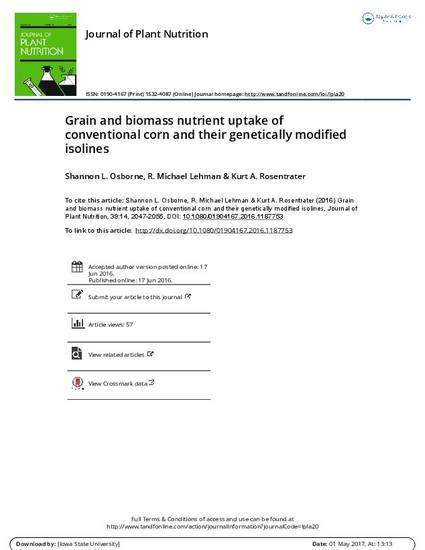
The adoption of genetically engineered crops in the United States has increased dramatically over the past decade. Differences in agronomic characteristics and protein expression between genetically engineered plants and their naturally recombinant non-genetically modified (GM) counterparts are not well-understood. Experimental field plots were established in the spring of 2005 near Brookings, SD with 18 different commonly used corn hybrids including three conventional hybrids and their corresponding transgenic modifications. Specific research objectives were to evaluate in a side by side comparison, the impact of the genetic modifications on agronomic characteristics. Results show that glyphosate or insect resistance resulting from genetic modification, in the absence of significant insect pest or weed pressure and glyphosate application, were not likely to significantly alter productivity or nutrient composition of corn residue or grain. No significant differences were observed among the hybrids in average grain yield or above-ground biomass over the three years of the experiment.
Available at: http://works.bepress.com/kurt_rosentrater/298/

This article appeared in Journal of Plant Nutrition 39 (2016): 2047–2055, doi:10.1080/01904167.2016.1187753.